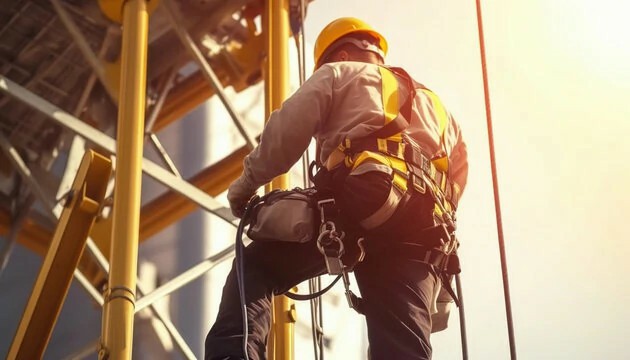


 349,500 Offered Certificates
349,500 Offered Certificates
 24/7 Online Training
24/7 Online Training
 Money Back Guarantee
Money Back Guarantee
 Fully Accredited Courses
Fully Accredited Courses

Created at: 22-02-2025 15:10
Working at heights presents significant safety risks that can lead to tragic accidents. Ensuring that workers are properly trained to handle these dangers is crucial for maintaining a safe work environment. In this blog post, we will explore the major risks associated with working at heights, the importance of fall protection systems, and the necessity of emergency response planning. Additionally, we will dive into real-life case studies demonstrating how effective training has prevented serious incidents.
When we refer to working at heights, we encompass any task that is performed at an elevation where the risk of falling is present. Common workplace hazards include:
Proper Working at Heights Training equips workers with the knowledge necessary to safely perform tasks at elevation. This training should cover:
Courses such as the Working at Heights Safety Course or the Certified Working at Heights Training provide a comprehensive curriculum designed to ensure safety in challenging situations.
Effective fall protection systems are paramount in reducing injuries and fatalities. They can include:
Understanding how to employ these systems is integral to any Working at Heights Certification.
No safety plan is complete without a thorough emergency response plan. Key components should include:
Effective communication during emergencies can save lives and minimize injuries, emphasizing the critical need for practical training.
Real-life scenarios provide compelling evidence of the benefits of effective training. Consider the following:
Case Study 1: In a construction project in Dublin, workers were tasked with roof repairs. Due to Working at Heights Certification Ireland training, they recognized unstable surfaces and set up guardrails and safety nets. When a nearby storm caused sudden high winds, their preparedness allowed them to secure the site and prevent potential falls.
Case Study 2: A factory in Cork faced a potential accident while performing maintenance on high machinery. Thanks to the Working at Heights Course training, a worker noticed a frayed harness. Before starting the job, the team replaced it, averting what could have been a serious incident.
As we have seen, the risks associated with working at heights are significant, but implementing proper training can dramatically reduce accidents and injuries. Enrolling in Working at Heights Online Course or attending a registered program in your area can equip you with the skills necessary for a safe working environment. Protect yourself and your colleagues—make safety the priority.
Interested in learning more about our offerings? Check out our Working at Heights course and contact us at [email protected] for further inquiries!